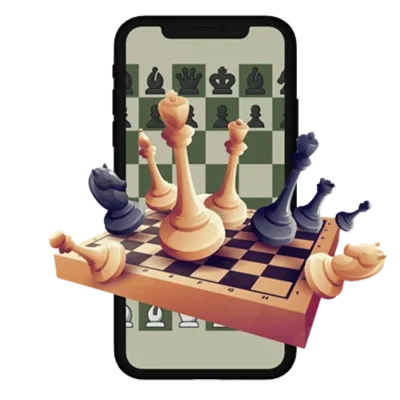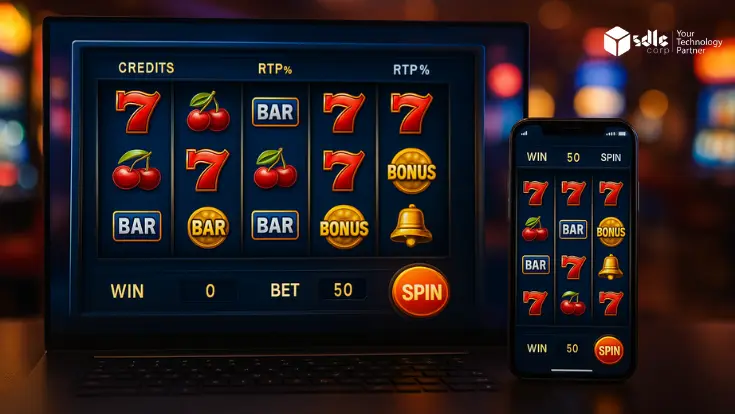The evolution of digital gaming has brought chess into the spotlight with modern technology, allowing players from all over the world to engage in thrilling battles of wits, regardless of their device or location. Cross-platform chess games have emerged as a popular trend, enabling seamless gameplay across various operating systems, devices, and screens. But how do developers create a smooth, functional experience that ensures fairness and accessibility for all players? In this guide, we’ll delve into the process of developing a cross-platform chess game, from design considerations to technical requirements, ensuring that your game provides seamless gameplay across different platforms.
Whether you’re a game development company or an individual game developer interested in creating engaging chess games, understanding the complexities of cross-platform game design is essential. As mobile, desktop, and web platforms grow, ensuring your game is accessible to the widest audience is a key component of success. This guide explores the essential steps to building a chess game that stands out in an increasingly competitive space.
Start your Chess game development today!
Launch your next big Chess game with our expert development team.

Why Cross-Platform Chess Games Matter
In a connected world, players expect their favorite games to be accessible anytime, anywhere, regardless of the device they’re using. Cross-platform compatibility in chess games offers a more inclusive experience by allowing users to play on mobile phones, tablets, desktop computers, and even web browsers. Here’s why cross-platform chess games have become crucial in modern gaming:
- Wider Audience Reach: With support across multiple devices, your chess game can reach a broader audience, from casual mobile players to competitive desktop users.
- Player Engagement: Players can switch between devices without losing progress, keeping them more engaged.
- Monetization Opportunities: More platforms mean more monetization strategies, including in-app purchases, ads, or subscription models.
- Increased Lifespan: Games that are accessible across various platforms tend to have a longer lifespan, as players can continue to enjoy them even when they switch devices.
Key Design Considerations for Cross-Platform Chess Games
When creating a chess game that works seamlessly across multiple platforms, several design factors must be taken into account to ensure smooth gameplay and user satisfaction. These design considerations are critical in chess game development, focusing on ensuring that the game feels intuitive and functional on any device. Proper planning in chess game development can help deliver a user-friendly experience that players enjoy, regardless of the platform they choose to play on.
1. User Interface (UI) Design
The UI is the first element users interact with, and its design should adapt to different screen sizes and input methods, whether it’s touch controls on mobile or keyboard and mouse on desktop. A simple, clean UI design is essential for a chess game, as the game’s complexity comes from the gameplay itself, not the interface.
- Responsive Design: The interface should automatically adjust to different screen resolutions without sacrificing usability.
- Touch vs. Click Controls: Mobile players will rely on touch controls, while desktop users will use mouse clicks. It’s important to design an interface that caters to both input methods.
- Customization: Providing users with customizable themes, board sizes, and pieces can enhance the playing experience.
2. Consistency in Game Mechanics
The chessboard, rules, and moves should remain consistent across all platforms to ensure fair gameplay. Maintaining consistency across platforms not only involves ensuring that the game logic functions the same but also that the performance and experience remain smooth regardless of the device used.
- Standardized Chess Rules: Ensure that the chess game follows universal rules and that the game mechanics are thoroughly tested for consistency.
- Multiplayer Synchronization: In multiplayer games, ensure that moves are synchronized across all devices in real-time, providing a fair and competitive experience.
- Latency Management: On different platforms, players may experience varying degrees of latency. Building mechanisms to handle lag and slow connections is critical.
3. Cross-Platform Compatibility Testing
Testing for cross-platform compatibility is a critical part of development. Each platform (iOS, Android, Windows, MacOS, and browsers) comes with unique requirements and potential bugs. Before release, the game should be tested thoroughly to ensure it runs smoothly across all platforms. This requires testing not just on multiple operating systems but also across different device generations.
- Device Testing: Make sure your chess game functions properly on a wide range of devices, from older smartphones to the latest high-performance gaming PCs.
- Network Testing: Ensure seamless multiplayer experiences with minimal lag and smooth transitions between devices.
- Bug Fixing: Test for platform-specific bugs and ensure they are fixed before launching the game.
Technical Stack for Cross-Platform Chess Game Development

Developing a cross-platform chess game requires the right technical stack to ensure a unified experience across all devices. Below are some of the key technologies and frameworks to consider:
1. Game Engines
Choosing the right game engine is a fundamental decision in chess game development. Some engines are better suited for cross-platform development and can save time by allowing you to deploy to multiple platforms with a single codebase.
- Unity: Unity is one of the most popular game engines for cross-platform development. Its extensive libraries, strong community support, and ability to export to multiple platforms make it a great choice for chess game development.
- Unreal Engine: While more known for high-end 3D games, Unreal Engine can also be used for chess games that require visually stunning environments. Like Unity, it supports multiple platforms.
- Godot: A lightweight and open-source engine, Godot is becoming increasingly popular for 2D games, making it an ideal option for a simple yet effective chess game.
2. Programming Languages
The choice of programming language depends on the platform and the game engine you’re using. However, cross-platform development often relies on languages that are portable across different environments.
- C#: Unity uses C# as its primary language, and it’s an excellent choice for cross-platform chess game development.
- JavaScript: For web-based chess games, JavaScript and WebGL offer a lightweight solution for creating browser-based experiences.
- C++: Unreal Engine uses C++ as its scripting language, which provides powerful performance, particularly for high-end games.
3. Networking and Real-Time Communication
For multiplayer chess games, ensuring real-time communication between players is crucial. This can be achieved through various networking solutions and protocols.
- Photon Engine: A popular solution for real-time multiplayer games, Photon allows developers to create reliable, low-latency multiplayer chess games.
- Firebase: Firebase is another popular solution, particularly for mobile games. It provides real-time synchronization and can handle user authentication, matchmaking, and game state management.
4. Cross-Platform Frameworks
Using a framework that supports cross-platform development ensures that the game runs on multiple devices with minimal modifications to the codebase.
- Xamarin: Xamarin is a cross-platform framework that allows developers to create Android and iOS apps using a single codebase, making it ideal for mobile chess game development.
- React Native: React Native is another cross-platform solution that can be used for creating mobile apps that run on both Android and iOS, and it’s particularly useful if your chess game has a large web component.
Ensuring Seamless Gameplay Across Platforms
Seamless gameplay is critical for keeping players engaged, especially in multiplayer chess games where any lag or delay could affect the experience. Here’s how to ensure a smooth experience across all platforms:
1. Cloud Saves and Synchronization
Allow players to save their progress and switch devices without losing their game state. Cloud storage solutions like Google Cloud, AWS, or Firebase can store game data, ensuring players can pick up right where they left off.
2. Real-Time Updates
Ensure that the game state is updated in real time for all players. In multiplayer chess, when a player makes a move, that move should be reflected immediately on all devices. Using real-time communication protocols like WebSockets ensures low-latency updates.
3. Matchmaking and Player Rankings
A solid matchmaking system that pairs players of equal skill levels is essential for keeping the game fair and competitive. Implement a player ranking system and use algorithms to match players based on their win-loss record or rating.
Start your Chess game development today!
Launch your next big Chess game with our expert development team.

Monetizing Cross-Platform Chess Games
There are various ways to monetize cross-platform chess games, from in-app purchases to ad revenue. Here are a few strategies:
- Freemium Model: Offer the game for free, but provide in-game purchases such as custom board designs, avatars, or premium features.
- Ads: Implement ads in a way that doesn’t disrupt gameplay, such as between matches or in menus.
- Subscriptions: Provide a subscription model for access to advanced features or competitive leagues.
Conclusion
Creating a cross-platform chess game that offers seamless gameplay across multiple devices is a challenging but rewarding task. By focusing on UI design, consistent in-game mechanics, thorough testing, and using the right technical stack, you can create a game that provides an exceptional experience for players on any platform.
For developers looking to enter the competitive world of chess gaming, offering a product that works flawlessly across mobile, desktop, and web platforms is key to success. Whether you’re part of a game development company offering game development services or an individual game developer, cross-platform compatibility will enable your chess game to reach and engage a broader audience.
The demand for chess game development services continues to grow, driven by the need for flexible and immersive gaming experiences. By following the guidelines in this article, you can create a chess game that delights users and stands out in a crowded marketplace.



